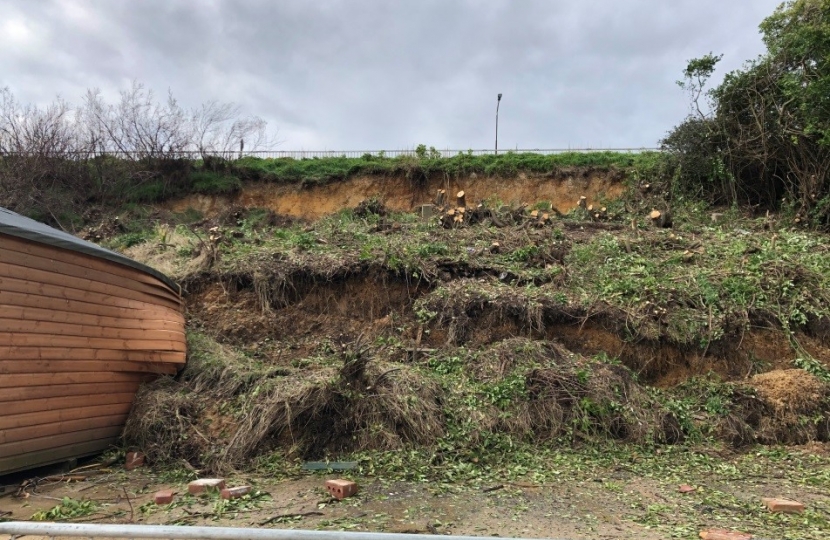
Proposals to spend an additional £1.5million to repair unstable cliffs in Holland-on-Sea have been backed by councillors.
Tendring District Council (TDC) had already set aside £631,000 to assess the damage to the cliff face and explore options for the ongoing stabilisation of the 200 metre section of cliffs.
Following a tender process seeking prices for the repairs the total budget estimate for the repairs is £2.1m – lower than the original estimation of £4m.
At the full council meeting on 27 April, TDC backed plans to fund the works using the beach recharge reserve, by topping up the project budget by £1.5m.
Council officers have also been instructed to seek external funding to support the works, and to make representations to Government about the wider issue of helping coastal local authorities with such problems in the long-term.
Due to the urgency of the current situation, though, TDC will fund these works.
The beach recharge reserve was set aside after the creation of new beaches in 2015 to fund future replenishment of sand, on an estimated ten-year cycle. Although the first replenishment date has not yet been reached, to date there is no requirement to do so and it is hoped a longer cycle of beach replenishment can be used.
Carlo Guglielmi, TDC’s Deputy Leader and Cabinet Member for Finance, said: “Doing nothing is not an option here, while maintaining and improving our seafronts is a key part of our emerging Tourism Strategy and vital for our local economy.
“This is a considerable sum of money, and not a decision we take lightly, but acting now will save us much higher costs in the long-term and so it is prudent to act now.
“That is why Cabinet backed this proposal and will now, with the approval of full council, progress this project.”
Around 200 metres of cliff face across three sections of the Holland-on-Sea seafront have slipped since February 2020, with 13 beach huts moved for their protection. It is a different section of cliffs to the stretch that was stabilised under a £5m scheme in 2018-9.
If left unchecked the cliffs risk further collapse which could, in time, lead to the loss of both the upper and lower promenades as well as sewer systems and the seafront road.
Under the plans, as well as stabilising the cliffs and protecting those amenities for the next 50 to 100 years, provision could be made for 30 new beach huts. Stabilisation work includes amending the gradient of the cliffs and installing drainage to reduce the build-up of ground water, which is the primary cause of slippage.

